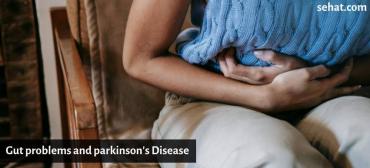Poison Ivy / Poison Oak and Children
What is poison ivy/poison oak?
There are three native American plants that collectively may be called poison ivy:
-
Poison ivy
-
Poison oak
-
Poison sumac
These plants can cause an allergic reaction in nearly 85 percent of the population. To be allergic to poison ivy, your child must first be "sensitized" to the plant's oils. This means that the next time there is contact with the plant, a rash may occur.
What causes an allergic reaction?
The resin in the plants contains an oily substance called urushiol. Urushiol is easily transferred from the plants to other objects, including toys, garments, and animals. This chemical can remain active for a year or longer. It is important to know that the oils can also be transferred from clothing or pets, and can be present in the smoke from a burning plant.
What are the symptoms of an allergic reaction to poison ivy/poison oak?
The reaction is usually contact dermatitis, which may occur several hours, days, or even weeks after exposure. The dermatitis is characterized by a rash followed by bumps and blisters that itch. Sometimes, swelling occurs in the area of contact. Eventually, the blisters break, ooze, and then crust over.
Treatment for poison ivy/poison oak
Making sure your child avoids the poisonous plants is the best treatment. It is important to teach your children what the plants look like and not to touch them.
If contact with the plants has already occurred, you should remove the oils from the skin as soon as possible by cleansing with an ordinary soap. Repeat the cleaning with the soap three times. There are also alcohol-based wipes that help remove the oils. Wash all clothes and shoes also, because the oils can remain on these.
If the blisters and rash are on the face, near the genitals, or all over the body, your child's physician should be notified. After a medical history and physical examination, your child's physician may prescribe a steroid cream, oral steroids, or steroid injections to help with the swelling and itching.
Is poison ivy/poison oak contagious?
Poison ivy/ poison oak cannot be spread from person to person by touching the blisters, or from the fluid inside the blisters. It can be spread, however, if the oils remain on the skin, clothes, or shoes. This is why washing your child's hands, clothes, and shoes as soon as possible is very important.
Preventing poison ivy/poison oak:
-
Teach all family members to recognize the plants.
-
Make sure your child wears long pants and long sleeves when poison ivy or poison oak are in the vicinity.
-
Wash all clothes and shoes immediately after your child has been outside.
-
Make sure your child does not touch a pet that might have been in contact with a poisonous plant.
-
Wash your child's hands thoroughly.
Related Questions
Patch
- 3214 Days ago
- Asthma & Allergies
Prostate cancer
- 3220 Days ago
- Asthma & Allergies
Chicken pox
- 3232 Days ago
- Asthma & Allergies
Dust and cough elergy
- 3251 Days ago
- Asthma & Allergies
I am allergic to some food
- 3719 Days ago
- Asthma & Allergies
My father is suffering with COPD
- 3678 Days ago
- Asthma & Allergies
Patch
- 3214 Days ago
- Asthma & Allergies
Dust and cough elergy
- 3251 Days ago
- Asthma & Allergies





















